How To Increase Bass On Headset
In this guide nosotros explicate how to give your headphones the perfect bass heave and enhance overall audio performance with a few tips and techniques.
If you lot got a brand new pair of headphones and are wondering for to give it a bass heave for lack of a low-end frequency response, y'all are in the right identify. Like many of you, I was wondering why my first brand new pair of headphones did non produce that punchy low-cease sound and bass impact that I was looking for while playing my favorite electronic trip the light fantastic music and stone music. The good news is that majority of the time the lack of bass (or no bass) tin can be remedied past a few lilliputian tweaks to your mobile device or computer'due south EQ settings, and some subtle modifications to your headphone. That being said, not all headphones are fabricated equally and some headphones definitely put far more emphasis on the treble and upper midrange frequencies – this is peculiarly true for studio headphones where the emphasis is on audio clarity for professional person studio monitoring. If y'all have a headphone that seems not to produce enough bass for your liking, practice consider the following steps below.
-
Things to Consider
-
Techniques for Bass Boosting
-
Headphone Distension
-
Conclusion
Things to Consider
Headphones designed for audio clarity (aka "Studio headphones").Before giving your headphone a bass boost past tweaking the EQ settings or using a DAC for sound distension, consider if your headphone is designed to produce or emphasize bass reproduction. Some headphones are simply designed for musical clarity and come up with a flat or neutral EQ setting – this means that these headphones do not naturally produce a lot of bass and tweaking the EQ settings to artificially enhance the bass response will probably not get y'all very far. Some examples of headphones that are designed for analytical clarity and have a neutral tonal balance include the Sony MDR7506, AKG K240, Behringer HPS3000, Sound Technica ATH-M20x, Sennheiser HD280 and the LyxPro HAS-10 and HAS-30 headphones, just to proper noun a few. These headphones are designed for professional monitoring and studio recording and will produce audio as accurately as possible, which means that it provides more analytical clarity over the depression-finish to lower midrange frequencies.
Headphones designed for bass reproduction.There are other headphones that are specially designed for ultra-low bass reproduction. These include the Ultrasone Pro 900s, the V-Moda Crossfade LP2s, Sony MDR-XB950s, JVC HA-SZ2000s, and the Fostex TH900 headphones. These headphones accept a very bass-orientated sound signature and a much warmer sound to better the low-end thump. Some of these headphones cede clarity in the highs and upper midrange frequencies for extra bass performance, which may or may not be a good thing depending on your musical tastes. For bass heads, these headphones are literally a dream come true and can rattle your caput with powerful bass impact.
Open or closed back headphones.Some headphones are designed with an "open" design that leak sounds while others accept a "closed" pattern that keeps sound inside the cans. Open up headphones are more often than not designed to give a more than airy and spacious music sound operation and allow audio to leak gratis from the headphone into the environs environment – this gives the sound a much wider soundstage and makes information technology feel as though yous are sitting in a real life orchestra hall. These types of headphones are all-time suited for vocal performances and classical music with an accent on sound clarity rather than bass – they do non produce a lot of low-terminate frequency response due to the open nature of the headphones. By dissimilarity, closed-back headphones are designed for sound isolation and forestall sound from leaking from the headphones. These headphones generally focus on the midrange to lower frequency ranges with the effect that the sound comes across equally warmer and with more bass impact. Airtight-back headphones are not designed for analytical sound listening and mostly perform better with electronic trip the light fantastic toe music and bass-heavy genres that require a more impactful low-end.
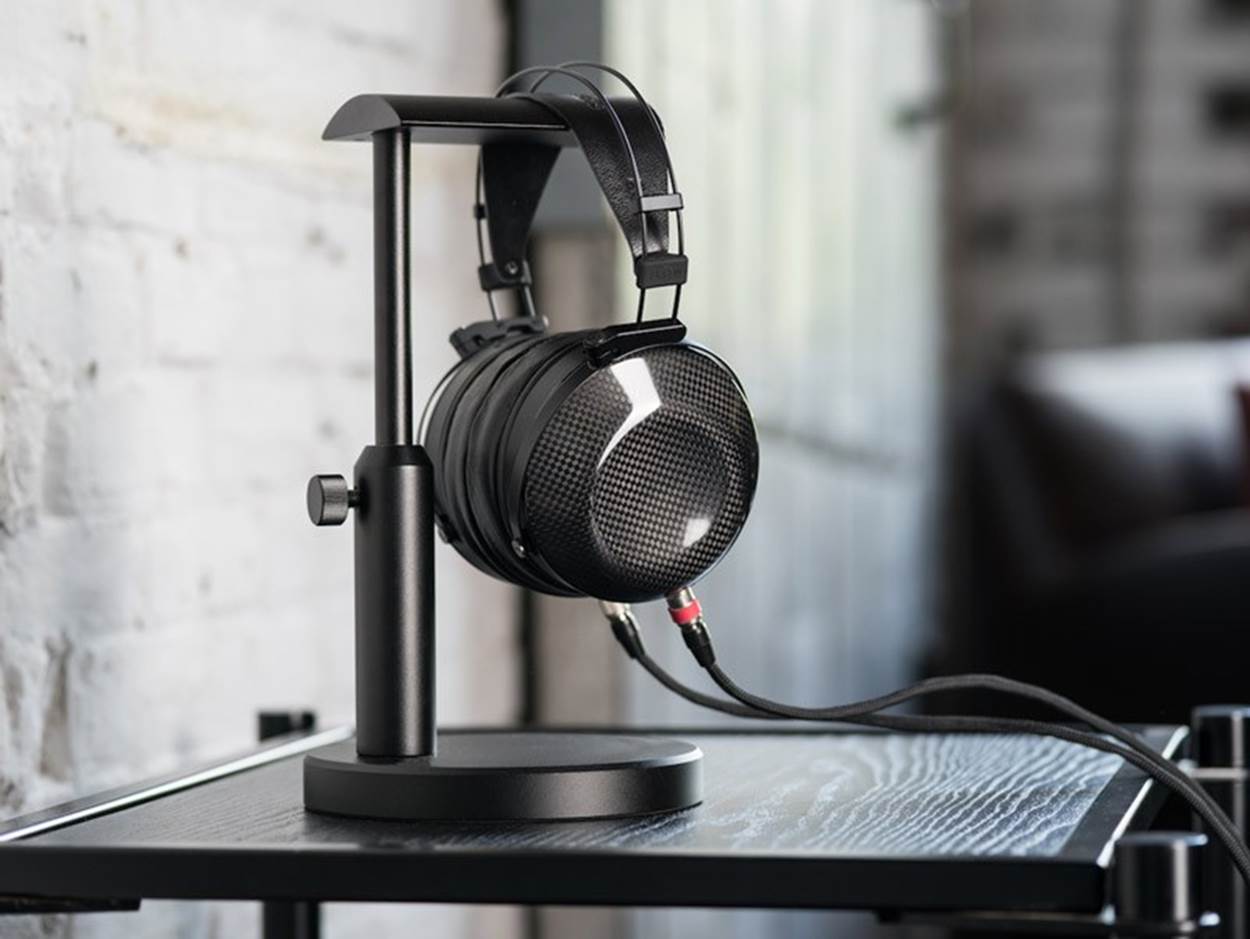
Depending on whichever category your headphone falls under or whether information technology falls somewhere in between these categories, this volition determine how much bass the headphone can produce. Naturally, if you provide a bass booster for headphones that are designed for neutral frequency ranges you will go much less bass output than hoped. The opposite is true for bass-heavy headphones and giving them a bass booster for headphones that are geared for low-terminate sound reproduction will profoundly enhance the low-terminate thump. It really boils downwards to what your headphones are designed to do – if you feel that your headphone is not producing plenty bass for your liking, consider these options below. Otherwise, it may be time to switch to more bass heavy headphones which you can find on our updated list here.
Techniques for Bass Boosting
Finding an optimal bass booster for headphones that does not produce plenty bass actually involves a few steps. This can range from connecting your headphone to a DAC headphone amplifier to only increasing the EQ settings on your reckoner or mobile device.
Adjusting the EQ Settings
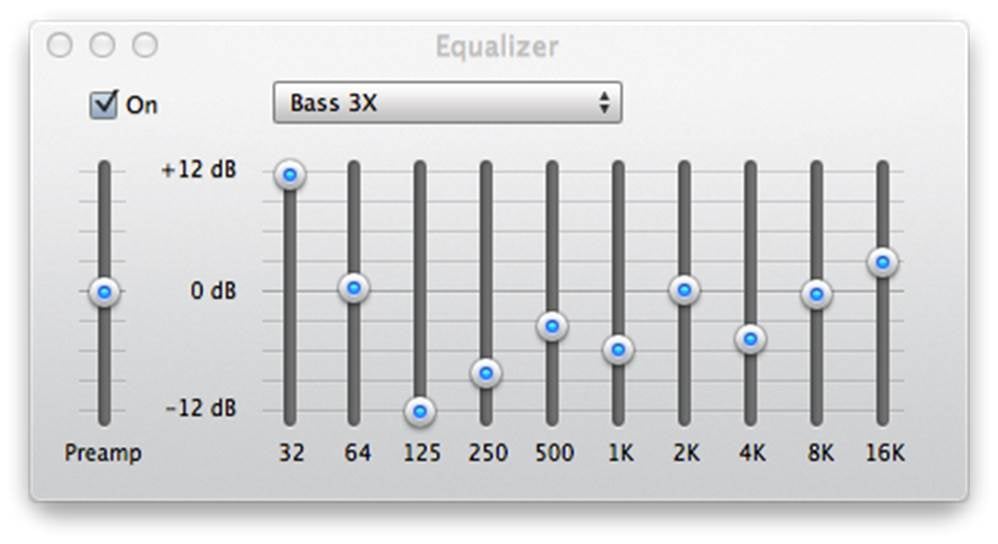
If you are using iPhone, simply head over to Settings and access the Music tab (Settings > Music). One time y'all are under the Music tab, roll down to EQ and adjust the EQ to "bass booster". This will ensure that your EQ settings are tweaked in such a way that the low-cease frequencies are enhanced, making your sound more punchy and generally warmer. Do note that in some cases this may cause the highs and midrange to fade out – in some cases you might also hear the bass muddying into the midrange but this more often than not depends on the quality of your soundtrack.
For android devices, simply tap on Settings > Audio & Notification, and then tap on Audio Effects at the bottom on the screen. You will need to accept Audio Effects switched on to apply this function. From there, you can preset the settings to bass booster or increase the db on the low-end frequencies to get a much better bass output on your headphones.
If you are playing music directly from your computer or laptop's auxiliary input jack, yous will demand to configure your book mixer settings and boost upward your lower frequency ranges. This can be done past clicking on your device and in the device settings, go to the "enhancements" tab and select the bass booster option. Note that non all computers will take this selection enabled and you may need to install a dedicated program on your computer to tweak the EQ settings on the auxiliary output. You can also adjust your soundcard settings if you have a dedicated soundcard for better bass response. While this method ordinarily works as a bass booster for headphones, do note that sometimes the ability from your reckoner'southward auxiliary port may non be powerful enough to drive your headphones especially if your headphones accept high impedance. Therefore, tweaking the EQ settings on your computer and even your mobile device will accept limited effects. The best solution for high impedance headphones is to become a dedicated headphone amplifier – we explain this in more item below.
Provide a tighter seal over or on the ears
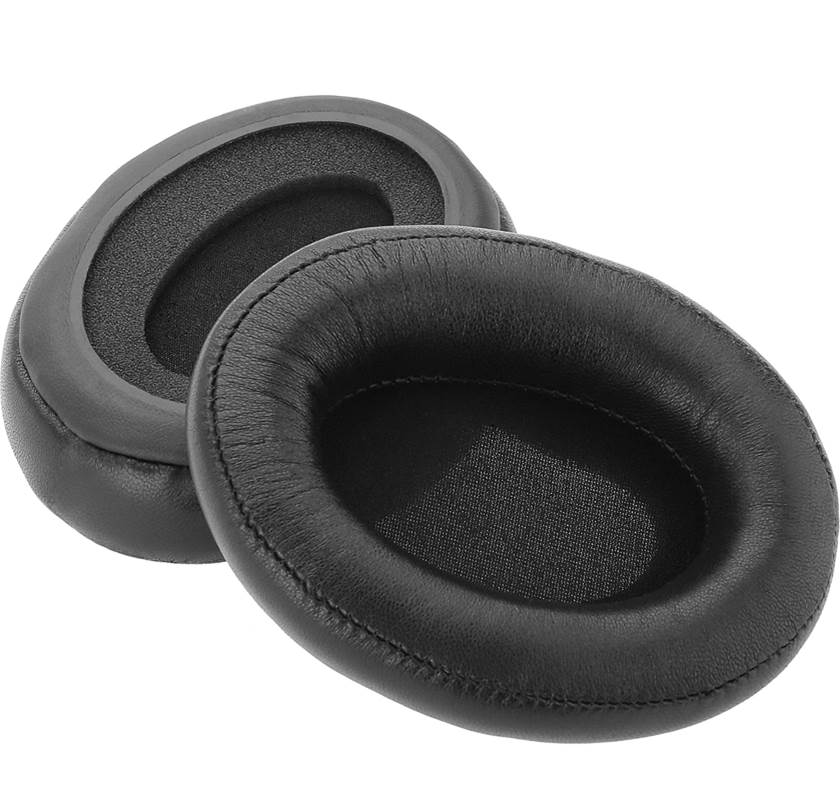
Nosotros would recommend using velour padding with your headphones to provide a tighter seal. Regardless of whether you utilise over-the ear or on-ear headphones, i factor that definitely influences how strong the bass response will go is how tight the seal over or on the ears are. The same concept is also true for earbuds. Past using ear pads that provide a tight and comfy fit over the ears, you will maximize the bass resonance from the acoustic drivers and prevent the bass from leaking out, thereby giving you a much ameliorate bass response. Mostly, headphones that are placed loosely over the ears do not really sound punchy due to bad positioning or just having leakage because of an increased altitude from the acoustic drivers to your ears. Reducing or eliminating whatsoever leakage caused by a loose seal volition provide a dainty bass heave from your headphones.
Ameliorate the quality of your audio files
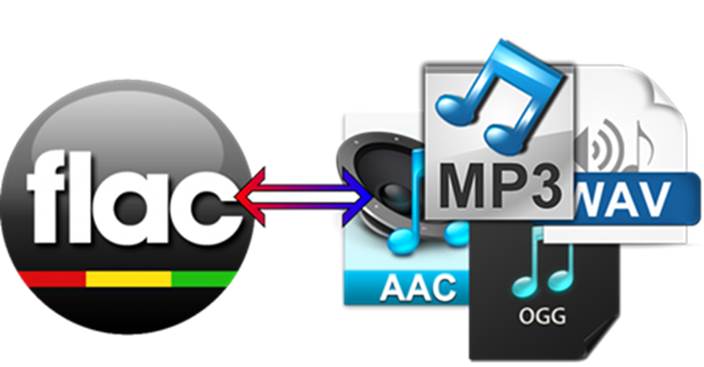
This is mostly one of the most disregarded factors and an important bass booster for headphones. We would recommend using high quality sound files such as FLAC formats if you really want to amend your bass response and overall listening experience. Depression quality audio files tin make your bass experience muddy and bloated – y'all definitely do not want to be listening to depression quality bass reproduction and boosting the bass with the EQ on these low-quality audio files will generally brand things worse. If uncompressed sound files are not the solution for yous, we would recommend having mp3 files with at to the lowest degree 320 kbps for college quality sound and much fuller bass response.
Intermission in your headphones
Most headphones do not audio skilful straight out of the box and need time to break-in. During the break in menses, the bass performance volition start to transform from being also harsh or mild into something smoother and much crisper to listen to. We would generally recommend giving such headphones a break in period of at least 10 hours to ensure that the sound has smoothen out for optimal bass reproduction. The bass response on headphones that accept been successfully cleaved in will sound refined and punchy without muddying into the midrange frequencies.
Low impedance headphones
If yous do non want to become a set up of headphone amplifiers for your headphone, the sure fashion to better bass response is to become a set of low-impedance headphones that tin can be driven by your mobile device or portable mp3 player. These headphones generally have an impedance rating of between 8 to 32 ohms and can be powered by mobile devices on the go. They are too mostly more sensitive to the quality of the sound recording feed through them and so be sure to push through loftier quality audio files or these headphones will actually expose the technical flaws in the sound. Depression-impedance headphones generally produce skillful punchy bass without the demand for any amplification which is definitely an added plus if you practise not want a dedicated amplifier.
Headphone Distension
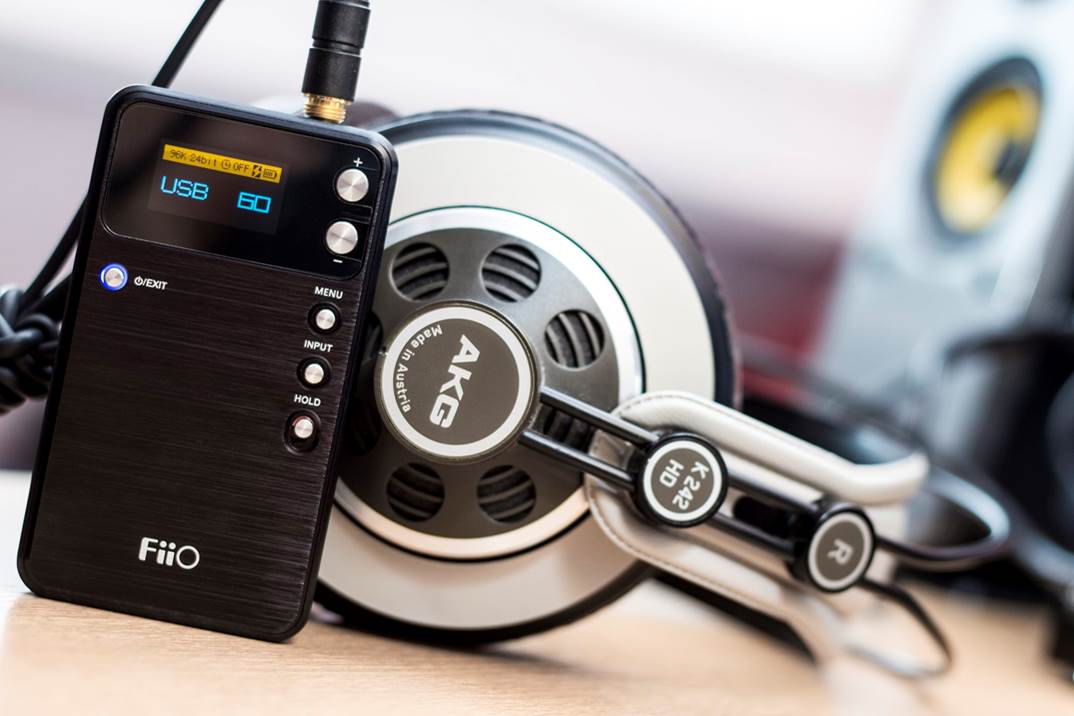
The best mode to heave the bass on your headphones is to use DAC amplifiers for headphones. We have previously reviewed a list of portable headphone amplifiers that y'all tin use to enhance the overall sound quality and bass response on your headphones. Generally speaking, nosotros have constitute that using a DAC amplifier is the best sure way to get the near bass out of your headphones and especially with headphones that have a college impedance, for case say 100 ohms.
At that place are many headphone amplifiers out there that tin provide very expert distension but we would recommend the FiiO E17 headphone amp for its versatility and portability. The FiiO E17 is particularly skilful if you lot are new to headphone amplifiers and is very simple to use. The amplifier tin can connect straight with your mobile device via auxiliary input or to a figurer via USB for digital sound streaming which by and large produces higher quality sound and better bass. The amplifier too has a dedicated control screen which you tin can use to tweak the treble, bass output and balance and is definitely much better than tweaking the EQ settings on your mobile device or computer. The advantage of an amplifier is that information technology likewise provides plenty of power to drive your headphone and will make headphones with higher impedance shine in the sound performance.
If you are new to the audiophile world and are looking for a decent amplifier at a very good toll signal, the FiiO E17 definitely comes highly recommend. You lot can also cheque out our updated list of best portable headphone amps that yous can use to increment audio amplification and bass output on your headphones. If you lot are using high cease headphones, using a dedicated amplifier is virtually always a must to get the best sound performance – otherwise you volition exist seriously undermining what you can get out of your headphones. You will be surprised what a departure an amplifier tin make to your headphones and provide very good bass booster for headphones.
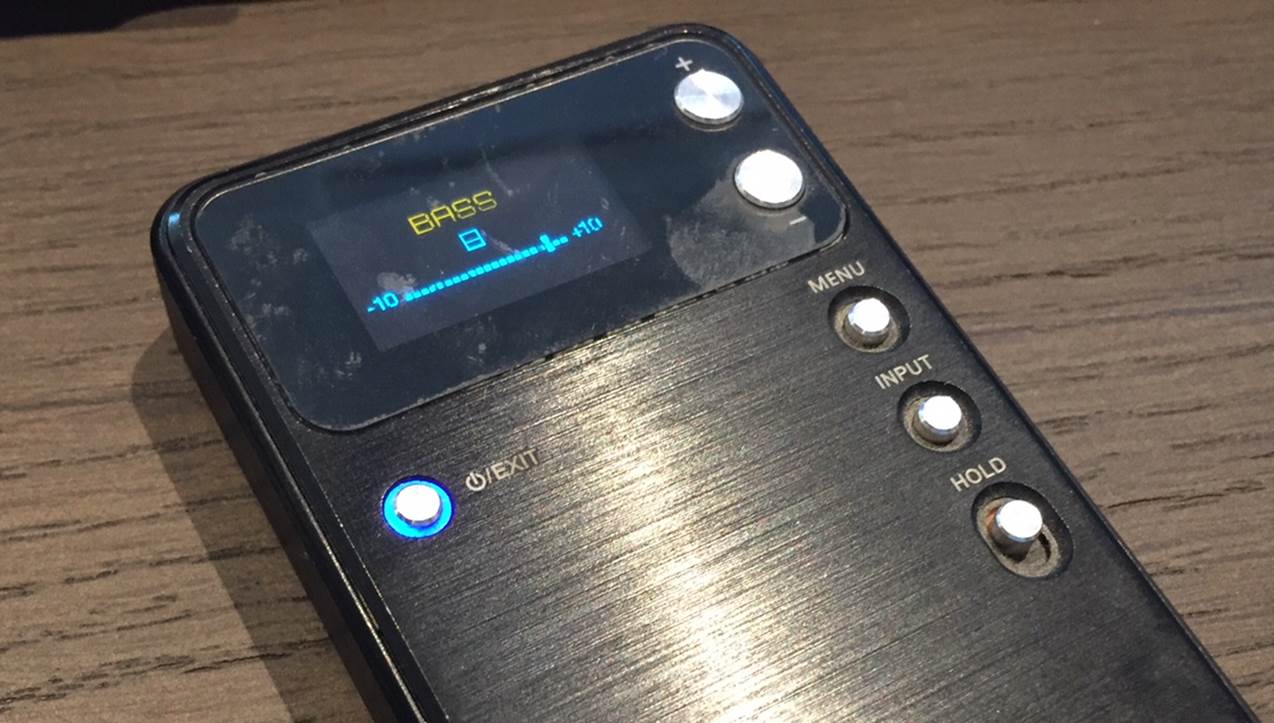
There are many reasons why nosotros would recommend the FiiO E17 headphone amplifier – although needless to say there are many options out there, this headphone amplifier works very well straight out of the box and comes with many intricate features to boost bass performance. Here are some reasons why you should get the FiiO E17 headphone amp:
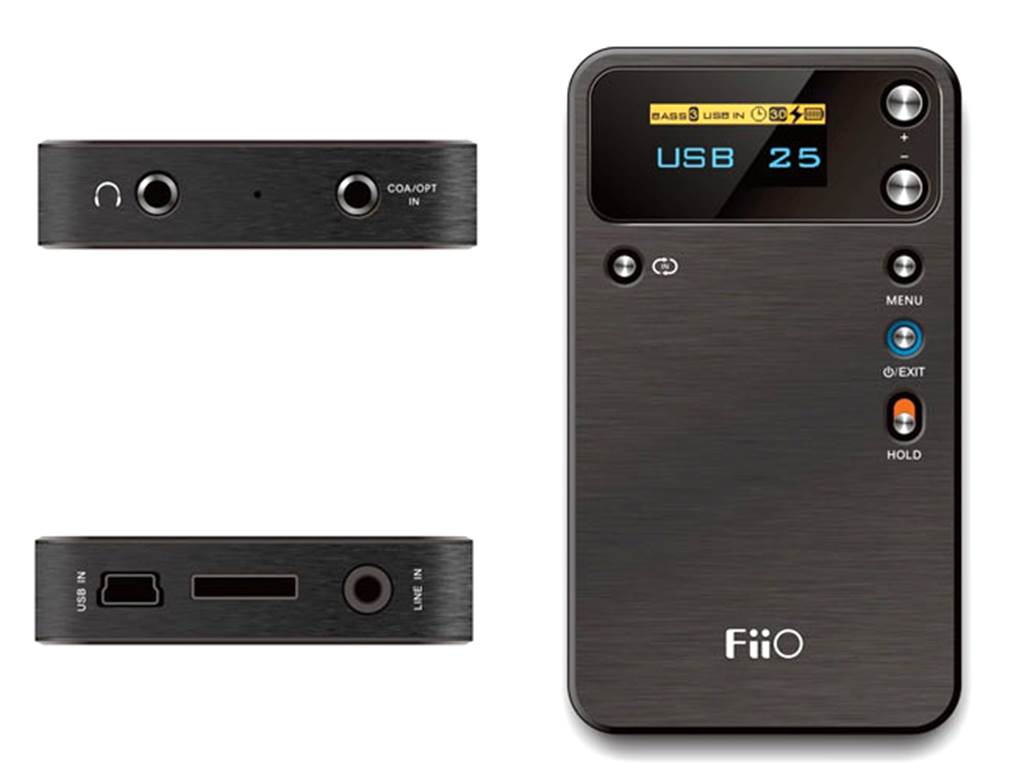
- The FiiO E17 connects directly to your PC or laptop estimator via a standard mini USB for audio transfer. It also comes with a 3.5mm SPDIF input (optical and coaxial included) to receive PCM signals up to 24-bit/192kHz. The amplifier as well has a 3.5mm analog line-in for other audio sources.
- The user interface on the FiiO E17 is easy to use. Unlike other amplifiers that provide an amp-only function (which merely increases how loud the book tin go), the FiiO E17 gives you the option to tweak the bass output, treble, balance and the book controls. Setting the bass output to maximum will definitely provide a nice bass booster for headphones of all types – and arguably much ameliorate performance for closed-back headphones.
- The FiiO E17 comes with a standard 3.5mm headphone output that is compatible with most headphone devices. They produce enough ability for 16 to 150 ohm headphones with a max output of 80 mA. They take a total harmonic distortion rating of 0.003% at 1 KHz which is excellent.
- The amplifier is powered a 1500 mAh internal bombardment which provides enough of portability in case you want to heed to your headphones while travelling on the go.
While amplification is just 1 of the ways to get a bass heave on your headphones, it is probably the most effective and highly recommended method. If you program to invest in a gear up of high-stop headphones then this is probably a not-negotiable choice if you want to get the near out of your headphone performance.
Conclusion
There are several ways to provide a bass booster for headphones of all types but the nigh effective technique is always to get a dedicated headphone amplifier to enhance the low-cease frequency response. This is because an amplifier volition be able to button more ability into your headphone drivers and deliver much better sound quality – this is specially truthful for loftier impedance headphones. Adjusting the EQ settings on your mobile device or computer is a fractional solution that may or may not work depending on what headphone type you are using. Nosotros would too recommend checking the quality of your audio files to ensure that they deliver optimal sound to your headphones – some headphones are very sensitive to the audio source and volition sound pretty cranky if the quality of the audio recording is lacklustre.
Mostly, airtight-back headphones have more bass impact than open-ended headphones. We accept compiled our updated listing of the headphones that produce the all-time bass response and are ideal if y'all intend to listen to bass-heavy music genres such as electronic dance music and rock. Retrieve, adjusting the EQ settings to artificially enhance the bass output may reduce the quality of the bass performance and cause your soundtracks to audio off point if non configured properly – if your headphones are designed for analytical clarity and studio monitoring, the more appropriate option is to invest in a set of headphones for low-cease sound reproduction to go skillful quality bass that will truly rattle your head with powerful and punchy bass.
How To Increase Bass On Headset,
Source: https://www.bassheadspeakers.com/bass-booster-for-headphones/
Posted by: vandenbergbeftelf.blogspot.com


0 Response to "How To Increase Bass On Headset"
Post a Comment